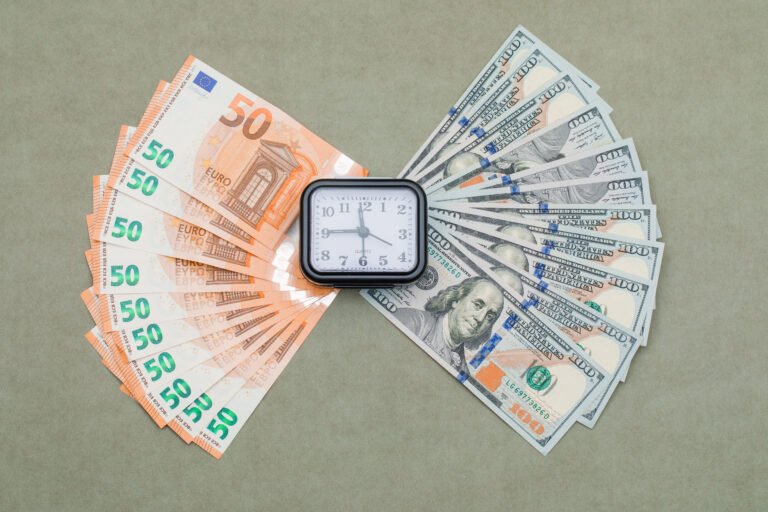1. Why Traditional Budgeting Tools Fail Most People
📉 The Problem With Spreadsheets and Overcomplicated Apps
Monthly Savings: Most people start their budgeting journey with the best intentions—and a complex Excel template. But after a few days, they stop updating it. Why? Because it’s tedious. Manually entering every transaction, tweaking formulas, and tracking categories isn’t just time-consuming—it’s mentally draining. Even budgeting apps often overwhelm with too many features and analytics most people don’t understand or need.

Table of Contents
🤯 Analysis Paralysis: Too Much Data, Not Enough Insight
Spreadsheets and some apps give you dozens of charts, tables, and figures. But here’s the catch: data isn’t the same as insight. You can know exactly how much you spent on coffee last month, but without context, that information is just noise. Real budgeting success comes from clarity, not clutter.
😩 When Tracking Becomes a Chore, Not a Strategy
If your tracking method feels like a job, you’re not going to stick with it. Budgeting shouldn’t be about micromanaging your money—it should be about understanding your money. Traditional tools often turn budgeting into a box-ticking task rather than a powerful financial strategy. No wonder so many people give up within weeks.
2. Think Like a CFO (Without Needing an MBA)
💼 What CFOs Really Focus On (And What You Should Too)
CFOs don’t obsess over every coffee purchase—they zoom out and focus on the big picture: cash flow, profitability, and sustainability. You don’t need a finance degree to do the same. Instead of tracking every single transaction, monitor just a few key metrics:
- Income vs. Expenses
- Savings Rate
- Cash on Hand
Start acting like the CFO of your personal life. Prioritize what moves the needle financially.
🔁 The Magic of Net Cash Flow and Burn Rate
Net cash flow is simple: money in minus money out. If it’s positive, you’re growing. If it’s negative, you’re burning through savings. Burn rate (how fast you’re spending) helps you understand how long your cash will last. These two metrics are what CFOs check regularly—and you should too.
💡 Quick Habit: Every month, ask: Did more money come in than go out? If not, why?
💡 Profit ≠ Cash: Know the Difference
You might feel “profitable” on paper—especially after a raise or bonus—but if your cash is tied up in delayed bills, subscriptions you forgot to cancel, or impulse spending, you’re still broke. Cash flow is king. Always track your liquid, available funds. CFOs know that income means nothing if it’s not translating into usable cash.
3. The No-Excel Monthly Savings Dashboard
📊 What You Actually Need to Track
Forget the 20-tab spreadsheets and endless receipts. To monitor your savings like a CFO (without Excel overwhelm), focus on just a few key indicators:
- Monthly Income (Total Inflows)
- Monthly Expenses (Total Outflows)
- Net Cash Flow (In – Out)
- Total Saved This Month
- Savings Rate (% of Income Saved)
That’s it. Simple, high-level numbers that help you stay clear and focused.
📱 Simpler Than a Spreadsheet: Budgeting Apps That Do It For You
If Excel isn’t your thing, great news: there are modern tools that do the heavy lifting for you. Try:
- YNAB (You Need a Budget): Great for zero-based budgeting
- Monarch Money or Copilot: Visual, clean, and intuitive
- Goodbudget or EveryDollar: Easy-to-use for envelope-style budgeting
- Notion or Google Sheets (Lite version): Minimal DIY dashboards for a clean monthly snapshot
These tools give you clarity without complexity.
🧭 How to Set Up a One-Glance System
Even if you prefer using your own system, you don’t need Excel mastery. Create a one-page dashboard (in Notion, Google Sheets, or even a notebook) where you update:
- Income
- Expenses
- Savings
- A simple bar graph or tracker to show progress
💡 Pro Tip: Use color coding (green for saving, red for overspending) so your eyes immediately know where you stand—like a CFO scanning a company’s monthly report.
4. Build a Monthly Savings Snapshot That Works for You
📝 Your 5-Minute End-of-Month Review Checklist
You don’t need to analyze every transaction to know how your month went. Just run through this quick, CFO-style checklist:
- ✅ What was my total income this month?
- ✅ How much did I spend?
- ✅ How much did I save?
- ✅ Did I stick to my savings goal?
- ✅ What one thing can I improve next month?
Keep it simple. Clarity beats complexity.
🎨 Color-Coding or Categories? Pick What You’ll Actually Stick With
Some people love detailed categories (groceries, dining, bills). Others prefer broad strokes (needs vs. wants). The best method? The one you’ll consistently use.
Add light visual cues like:
- Green = Saved money
- Red = Overspent
- Yellow = On track but room to improve
📌 Don’t over-design it—just make it intuitive and easy to glance at.
📈 Visuals Matter: Use Simple Graphs, Not Complex Formulas
A single progress bar can motivate you more than a full spreadsheet ever could. Try:
- A monthly savings thermometer
- A goal tracker that fills up as you save
- A 3-month savings trend chart to spot patterns
You don’t need Excel wizardry. You need something visual, digestible, and encouraging—something even a CFO would appreciate in a busy board meeting.
5. Automate Your Way to CFO-Level Control
🔁 Set-and-Forget Rules for Savings Transfers
A CFO doesn’t wait until the end of the month to “see what’s left.” They allocate resources first. You should too.
Set up an automatic transfer to your savings or investment account as soon as your paycheck hits. Even if it’s just Rs. 5,000 or Rs. 500—it adds up.
💡 Rule of thumb: Treat savings like a fixed expense, not an afterthought.
📱 Use Banking Alerts & Budgeting Apps for Real-Time Feedback
Modern tools can notify you when:
- You go over budget
- You’ve hit your savings target
- A subscription renews unexpectedly
CFOs rely on dashboards and alerts. So should you.
Apps like Revolut, Goodbudget, or even SMS alerts from your bank can keep you informed without checking manually every day.
⚙️ Zapier & Automation Tricks for Tech-Savvy Savers
Want to get fancy? Use tools like Zapier, IFTTT, or even Google Sheets integrations to:
- Log every transaction automatically
- Track savings goals with notifications
- Create custom reports without lifting a finger
These micro-automations save time and reduce the friction of tracking. CFOs use automation to scale their focus—you can too.
6. CFO-Proven Habits You Can Adopt Today
📅 Forecasting: Plan Your Savings Before the Month Starts
CFOs don’t just look backward—they project ahead. Before the month begins, decide:
- How much you want to save
- What fixed costs are coming up
- Where you might need to adjust spending
This simple shift from “tracking” to forecasting puts you in control—and helps you hit your savings targets more consistently.
💡 Mini-Habit: On the 1st of every month, write down your expected income, planned expenses, and savings goal. Check back at the end.
🏷️ Cost Centers: Break Down Spending Into Meaningful Buckets
Businesses group expenses into categories like “marketing,” “operations,” or “R&D.” You can do the same:
- Fixed Essentials (rent, bills)
- Growth (education, investments)
- Lifestyle (dining, shopping, streaming)
This helps you spot areas of overspending and cut without guilt—just like a CFO trims underperforming departments.
🧠 The Power of Weekly “Money Meetings” With Yourself
Successful CFOs have regular financial check-ins. You should too—even if it’s just 10 minutes.
Every Sunday, ask yourself:
- What did I spend this week?
- Did I move closer to my monthly savings goal?
- Any red flags or unexpected expenses?
Make it a ritual—coffee in hand, journal open, quick reflection. It turns your finances into something intentional, not accidental.
7. Bonus: Tools That Help You Skip Excel Without Losing Clarity
📱 Best Apps for Visual-First Budgeting
If you’re done with spreadsheets but still want clarity, these tools give you the high-level insights of a CFO—minus the data dump:
- YNAB (You Need a Budget): Great for assigning every dollar a job
- Monarch Money: Beautiful interface, ideal for families or couples
- Copilot: AI-powered and sleek, works only on Apple
- Goodbudget: Envelope-style budgeting made simple
All of these let you track income, expenses, and savings with visuals and automation, not formulas.
📓 Notion Templates for Personal Finance Tracking
For those who like customization and minimalism, Notion is perfect.
Use free or paid templates to:
- Set monthly savings goals
- Track spending by category
- View dashboards with charts and progress bars
It’s like building your own CFO command center—without learning Excel macros.
🤖 AI-Based Budgeting Assistants You Should Try
New tools are emerging that use AI to help you budget smarter and faster:
- Charlie (AI chatbot for saving money)
- Cleo (Budgeting with a side of humor)
- Rocket Money (Automatically cancels unused subscriptions)
These tools can analyze your behavior and suggest smart tweaks—like a personal finance assistant in your pocket.
💬 Final Thoughts: You Don’t Need Excel to Be Financially Smart
CFOs don’t micromanage spreadsheets—they focus on strategy. You can too.
By simplifying your system, automating what you can, and staying consistent with a few high-impact habits, you can track your monthly savings like a pro—even if you never open Excel again.
✅ Start small. Stay consistent. Think big.
Read Also: The Weekly Budgeting Method That Helped Me Cut Expenses by 30%






